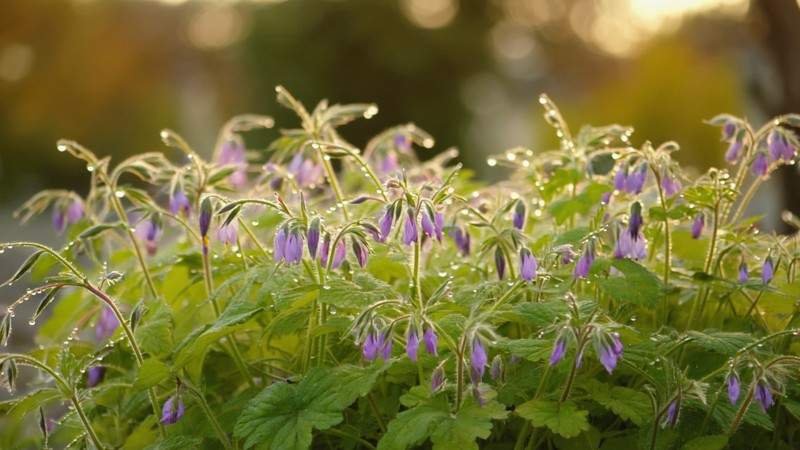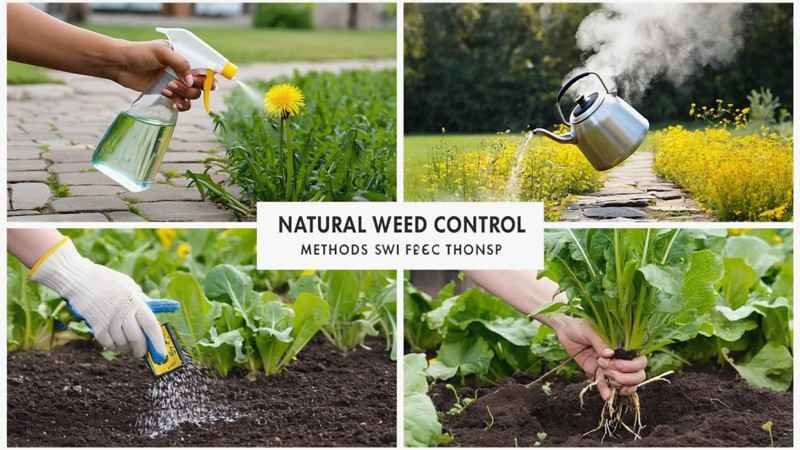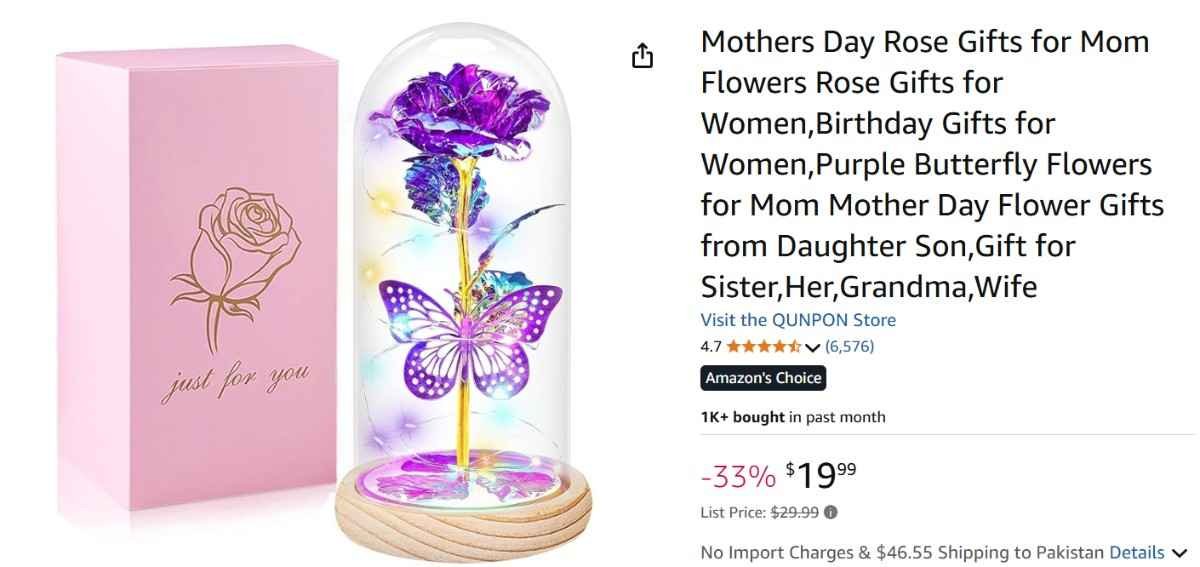Let’s make a painting. It’s the sunny morning with having a cup of coffee on the table, bird chirping and you notice the sun rising. A patch of rebellious color. A wild purple flower in yard chaos. You think, “Wow, pretty!” But wait… is that a weed?There’s no one else in this disorientation. The purple-colored flowers of weeds blur the distinction between art and nuisance. They’re sneaky. They bloom like they own the place. And the kicker? They keep coming back. So let’s dive in and talk about these invaders dressed in lavender suits.
The Purple Invasion Begins
Weeds with purple flowers are everywhere. From backyards to soccer fields, they spread with little shame. It might start with a few. Just one or two. Then? Boom. By spring, it’s a royal carpet. These aren’t your average green sprouts. Nope. These weeds that bloom purple flowers love the limelight. They thrive in cracked sidewalks, beneath trees, and through perfectly laid mulch. Whether it’s spring weeds with purple flowers or those that pop up in winter, they’ve got one thing in common: survival instinct. They look delicate. Don’t let that fool you.
A Mix of Beauty and Chaos
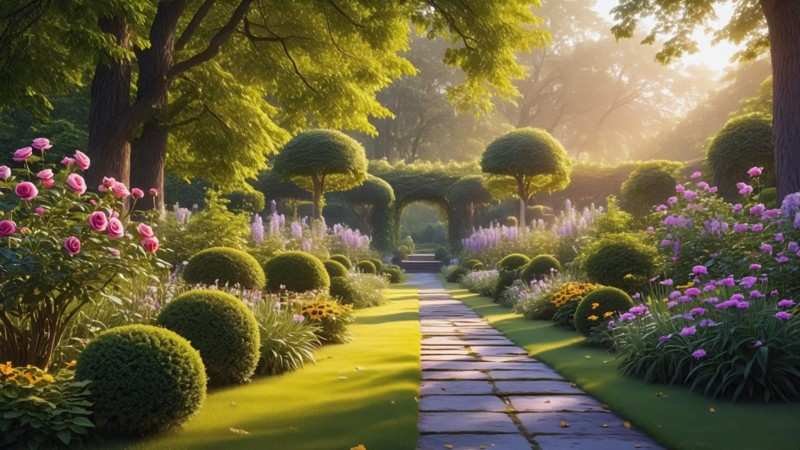
They say beauty is in the eye of the beholder, right? Some folks adore the look of tiny purple flower in grass patches. Others? Not so much. Especially when those blooms start choking out their veggies. One moment, your lawn’s a masterpiece. Next, it’s a war zone of small white and purple flowers in lawn corners. Are they friend or foe? This is the million-dollar issue. The exact weed that destroys your garden’s cucumber beds can look stunning in a glass jar that you place in your window. Confused? Good. That’s the whole vibe of weeds with purple flowers.
Meet the Usual Suspects
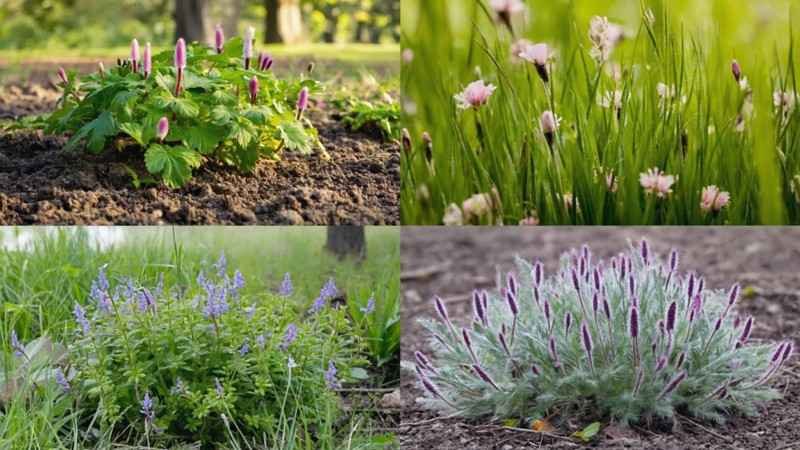
Let’s talk names. No, not fancy Latin. The nicknames—the ones you’ll hear from your neighbor or on garden forums at 3 a.m.
- Henbit: One of the most common spring weeds with purple flowers. Fuzzy leaves, square stems. Cute, until it takes over.
- Creeping Charlie (Ground Ivy): A shady character. Loves damp areas. And yes, it has those small purple flowers in grass patches.
- Wild Garlic Purple Flower: Strong smell. Tall. Not your average dainty bloom. And it pops up when you least expect it.
- Purple Deadnettle: Sounds like a metal band. Actually a fuzzy, low-growing weed with green and purple leaves.
The Science-y Side (Without Boring You)
Here’s the deal. Most of these weeds with purple flowers belong to the mint family. That explains the square stems. And their love for chaos. Mints spread fast. These weeds? Even faster. They grow in clusters, self-seed like it’s a sport, and survive mowing like little warriors. Some go dormant in heat, then spring back when it’s cool. That’s why winter weeds with purple flowers are especially frustrating. Just when you think it’s safe, boom—purple invasion. They’re smart. Adaptive. A little evil. But kind of brilliant.
Why Are They in Your Yard?
You didn’t plant them. You didn’t ask for a bouquet of white and purple weeds. So why you? Well, a few reasons:
- Compacted soil: Weeds love tough conditions. Your lawn doesn’t? That’s their chance.
- Bare spots: Where grass won’t grow, weeds throw a party.
- Birds and wind: Nature’s delivery service. Seeds fly. Land. Grow. Repeat.
- Your neighbor’s lawn: No lie. It spreads across fences like gossip.
Purple… and Problematic
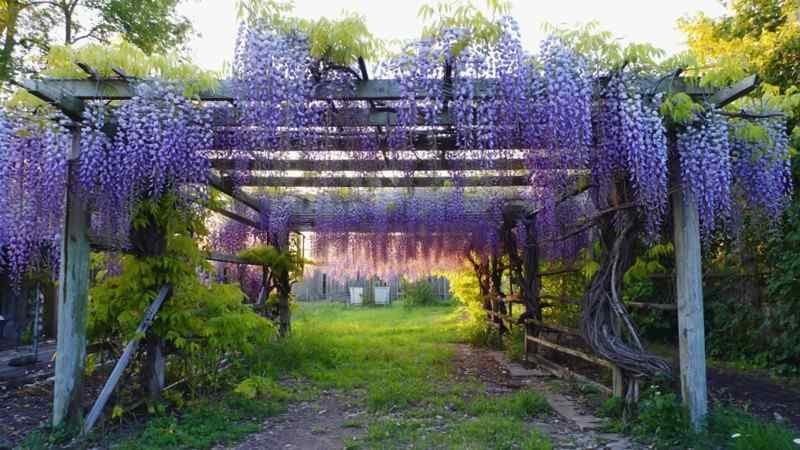
We get it. It’s tempting to leave them be. They’re pretty, right? But be warned. These weeds with purple flowers don’t just look good—they compete hard. They steal nutrients. Crowd out your daisies. And in some cases? They release chemicals that stop other plants from growing. Creepy. A wild purple flower in yard beds might be a warning sign, not a decoration. If they’re not checked, they’ll expand faster than “landscape fabric.” If you are concerned about the health of your yard, now is the time to be serious.
Identifying Them—Without Googling Every Five Seconds
Here’s a cheat code. You don’t need a degree in botany.
- Tiny purple flower in grass? Probably Creeping Charlie or Wild Violet.
- Fuzzy leaves + purple top + winter growth? Henbit or Deadnettle.
- Strong garlicky smell + long leaves? You guessed it: Wild Garlic Purple Flower.
- Purple stems and green top combo? That’s one of the many weeds with green and purple leaves.
Keep these in mind. Take photos. Compare. Don’t just guess. Because removing the wrong plant? That’s heartbreaking.
Are They Poisonous?
Good question. Some weeds that have small purple flowers are actually edible. Henbit? Deadnettle? Some folks toss them into smoothies. No joke. But here’s the twist: not all are safe. Some could cause rashes. Or upset tummies in pets. Rule of thumb? Don’t snack on weeds unless you’re 100% sure what they are. And definitely don’t let your dog treat them like salad. Even if that tiny purple flower in grass looks tasty—maybe just admire it from a distance, yeah?
When They Come: Seasons of Purple
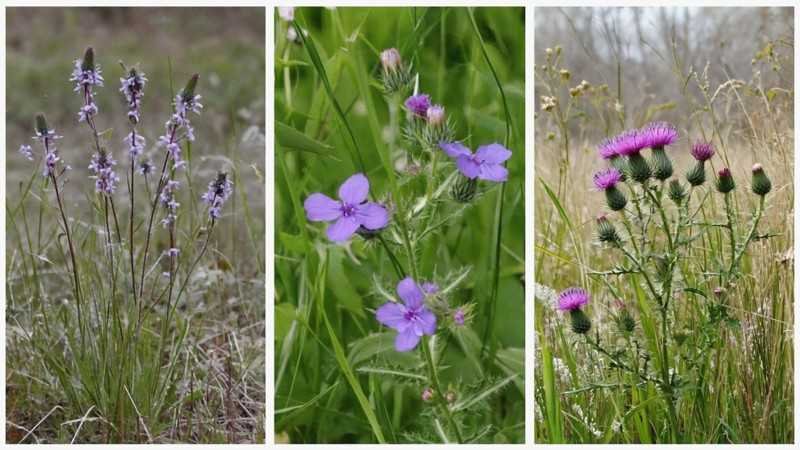
Being aware of when they pop out can make it easier to stop them.
- Winter Weeds that have Purple flowers: Henbit, Deadnettle–they germinate in the fall months, and then bloom the late winter months or before spring.
- The Spring Weeds of the Year with purple flowers: Creeping Charlie loves spring rains.
- Summer Surprise: Violets sometimes stretch into early summer. Not as common, but sneaky.
Each season brings its own mix. That’s what makes them tough. You think you’ve dealt with one round. Then a new army rolls in.
The Subtle Ones
Not all purple-flowered weeds scream for attention. Some hide. They blend. Those small white and purple flowers in lawn edges? They’re hard to spot. But they multiply. Fast. These subtle invaders include wild violets, self-heal, and even some species of clover. Yes, clover. Some versions bloom purple. Who knew? Just because it’s small doesn’t mean it’s harmless. Tiny purple flower in grass? That’s code for “I’m taking over and you won’t even notice.”
Stories from the Backyard
Quick story: My neighbor had a pristine lawn. Weekly trims. Fertilizer schedule like a military op. Then came one tiny wild purple flower in yard center. “Leave it,” he said. “It’s cute.” Fast forward two months? Total takeover. Even the mulch beds weren’t safe. Moral of the story? Weeds with purple flowers may start as art. They end as anarchy. Happens more than you think. That tiny bloom? It’s a gateway.
Aesthetic vs. Aggression
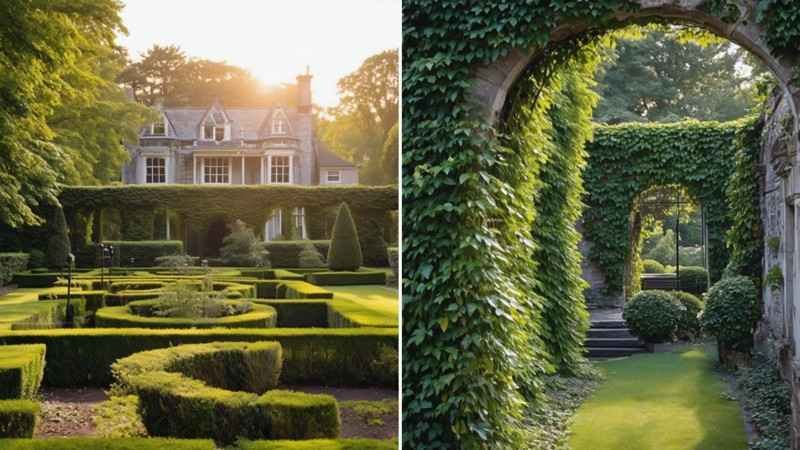
We get it. You want a natural look. Cottagecore. Wildflower fields. But there’s a line. Letting weeds with purple flowers run free means saying goodbye to your tomatoes. Your hydrangeas. Your turf. Some folks embrace the chaos. Let them. But if you’re aiming for control, keep a watchful eye. A small patch is fine. A full takeover? Not cute.
Prevention = Less Headache Later
Here’s where it gets real. Prevention beats the cure every time.
- Mulch thickly: No sunlight = no weeds.
- Overseed your lawn: Dense grass leaves no room.
- Mow high: Taller grass shades out seedlings.
- Aerate the soil: Healthier lawn = fewer invaders.
- Pull early: Don’t wait for flowers. Just yank.
Think of it like dental care. Ignore it? You’ll regret it later.
Natural Remedies for the Earth-Loving Crowd
No chemicals? No problem. Sort of.
- Vinegar spray: Works on young weeds. Not roots, though.
- Boiling water: Instant kill. But aim carefully.
- Corn gluten meal: Prevents seeds from getting germinating.
- Manual pulling: Therapeutic. Also exhausting.
Keep in mind: nature fights back. You’ll need to be consistent. One treatment won’t do it.
Chemical Warfare: If You Must
Sometimes, it gets real. Too real. If purple flowers have taken over your garden beds? You might need to bring out the big guns.
- Selective herbicides: These kill broadleaf weeds, not your grass.
- Pre-emergents: Stop seeds before they sprout.
- Spot treatments: Don’t drench your whole lawn.
Read labels. Follow instructions. Don’t wing it. And never spray when it’s windy, unless you want to kill your roses.
The Misunderstood Beauties
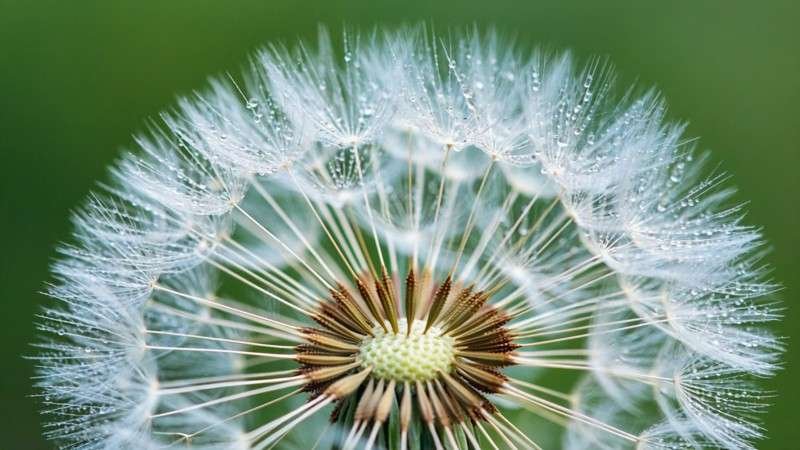
Not all weeds with purple flowers are evil. Some support pollinators. Bees love them. So do butterflies. In neglected spaces, they’re one of the first blooms insects find. Wild garlic purple flower patches can even deter pests. So, are they weeds—or wild medicine? Perspective matters. You might hate what others see as healing. That’s gardening for you.
How to Make Peace
Maybe the war’s not worth it. Maybe… you live and let grow? It’s an option. You could mow around a few patches. Let the kids pick bouquets. Embrace that wild purple flower in yard energy. After all, perfection is overrated. Some weeds with purple flowers? They’re just misunderstood guests. Not enemies. Not friends. Something in between.
Wildflower or Weed? The Ongoing Identity Crisis
This is where it gets philosophical. A small purple flower in grass name like “Self-Heal” sounds gentle, doesn’t it? Sounds useful. And it is—used for centuries in herbal medicine. Yet in your lawn? It’s enemy number one. Same with wild violets. Beautiful, sure. But their underground runners make them harder to remove than gum from a shag carpet. So… when does a wild purple flower in yard space cross the line from charming to choking? It’s not a science. It’s a vibe. And sometimes you just know.
White and Purple Weeds: Double Trouble
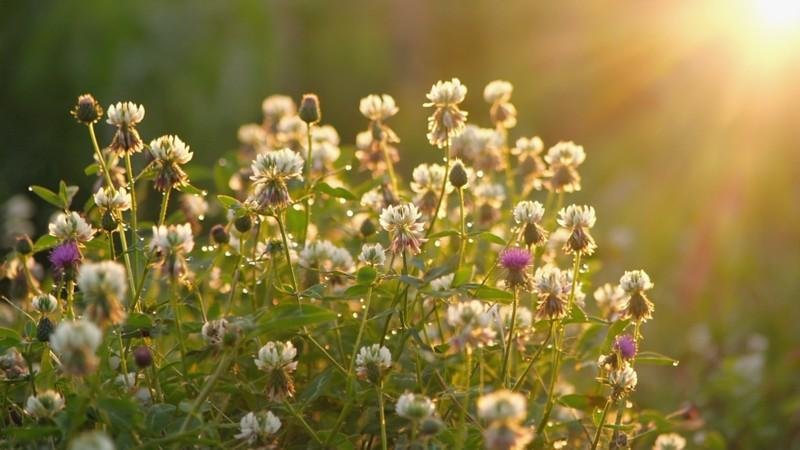
Let’s talk contrast. White and purple weeds might be the most photogenic of the bunch. They draw your eye immediately. A few of them look as if they’re from a flower shop. Don’t fall for it. That aesthetic appeal hides how fast they spread. Those seeds? Pop like tiny landmines. Some varieties even shoot them several feet. It’s impressive. And terrifying. These weeds that bloom purple flowers and white? They don’t care about your landscaping dreams. They just want more room.
When They’re Too Pretty to Pull
Guilt. That’s what you feel when you pluck something that looks like a miniature lavender bouquet. Especially when it’s blooming. And especially if you’ve just started gardening and feel unsure. But remember this: weeds with purple flowers are strategic. They look good so you’ll hesitate. It’s psychological warfare. Don’t fall for it. If it’s not where you want it—and it spreads—it’s a weed. Period. Sentimental thoughts can wait until your grass isn’t 50% purple.
Lawn Goals vs. Reality
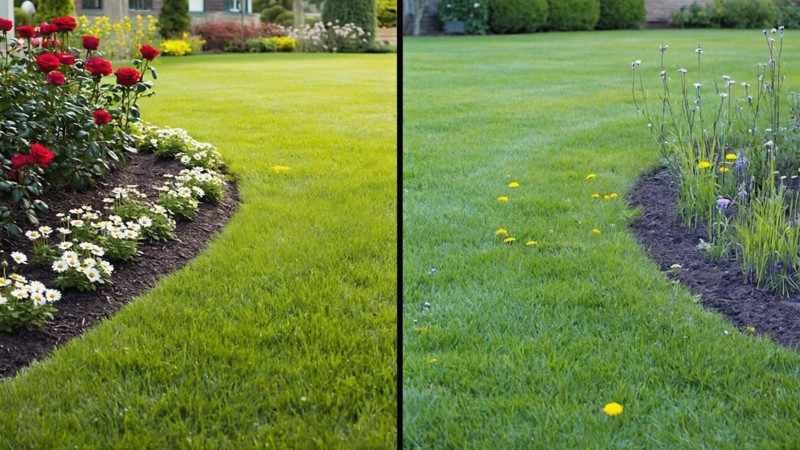
Let’s get real. The yard of every homeowner is not going to look exactly like the pages of a magazine. That’s fine. If you’re seeking a well-groomed and even lawn, it’s important make some tough options. Especially about weeds with green and purple leaves that creep through your turf. You can’t just mow and hope. You need a plan. Or at least gloves and a lot of free time. Most lawn problems begin with “just a few” purple blooms. Spoiler: they never stop at a few.
Why You Keep Seeing Them
No matter how many times you pull or spray or cry—there they are again. A fresh batch of tiny purple flower in grass corners. Why? Because seeds linger in soil. Because birds keep dropping them. Because they thrive in stressed-out lawns. You’re not failing. You’re just up against weeds that have small purple flowers… and big ambition. The best you can do is stay a step ahead. If they’re popping up again? It means the conditions are still perfect for them. Fix the conditions. You’ll fix the weed problem.
Small Purple Flowers in Grass Name — Let’s List ‘Em
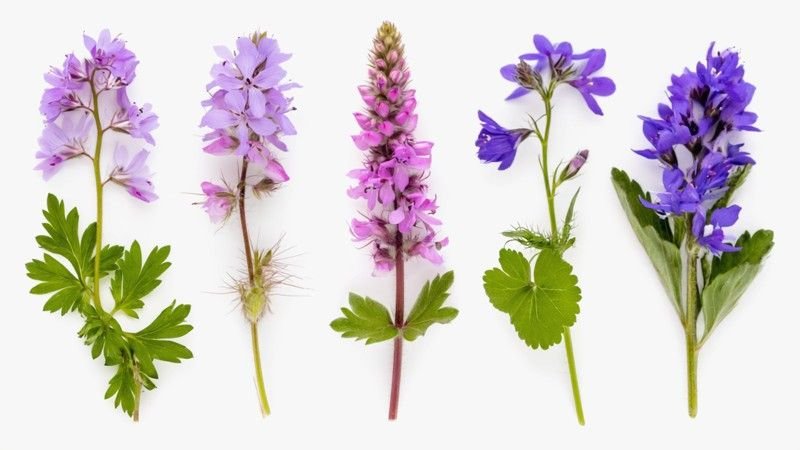
Okay, this is the section you screenshot for later.
- Creeping Charlie: Smells minty. Spreads fast. Tiny, violet blooms.
- Henbit: Loves cool weather. Round, scalloped leaves. Winter warrior.
- Purple Deadnettle: Soft and fuzzy. Triangular leaves. Bee favorite.
- Wild Violet: Heart-shaped leaves. Grows aggressively. Pretty but problematic.
- Self-Heal: Actually a medicinal plant. But still invades lawns.
- Wild Garlic Purple Flower: Tall, spiky. Smells like dinner. Looks innocent.
- Heal-All: Yup, that’s a real name. And it heals. But also invades.
Why Spring Is Their Playground
Spring is prime time. The earth warms up. Rain falls. And boom—spring weeds with purple flowers explode like confetti. It’s almost festive. Until you realize they’re choking your daffodils. The main culprits? Henbit and Deadnettle. They begin to sprout in late autumn but they can withstand winter. The flowers begin to blossom after temperatures rise to 10 ° Celsius (50degF). If you’re still not taking action prior to the first spring signs, best of luck trying to get caught up. Spring is also when they’re most vulnerable—pull them before they seed. Or they’ll dance all over your lawn for another year.
You’ve Tried Everything. Now What?
Here’s the harsh truth. Some yards? Too far gone. You can spray, pull, cry, mulch—and still lose. Sometimes the only solution is a lawn reset. Scalp the grass. Kill everything. Reseed. Start fresh. It sounds extreme. But if weeds with purple flowers have overrun your yard for multiple seasons? You may need to nuke the battlefield. The upside? You can rebuild smarter. Healthier grass. Stronger soil. Less stress. More lemonade on the porch instead of hours in battle mode.
Let the Bees Decide?
One last wild idea. What if… you don’t fight them? What if you create a “pollinator patch”? Let one section of your yard go rogue. Let those weeds that have small purple flowers do their thing. Mark it with a little sign: “Bee Buffet.” Suddenly, you’re not lazy. You’re eco-conscious. Those tiny purple flower in grass patches become habitat. And maybe—just maybe—the rest of your lawn stays untouched. It’s a gamble. But sometimes, you pick your battles. And win the war.
Lessons from the Weeds
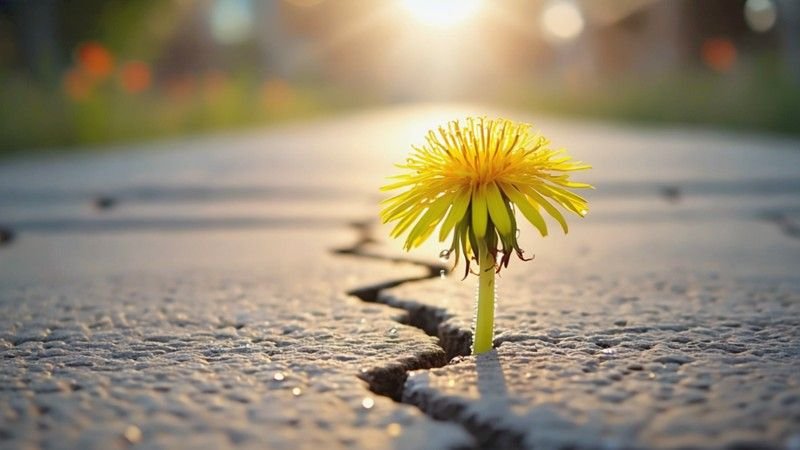
After a few seasons of fighting purple-flowered invaders, you start to learn things. Patience. Observation. The art of the slow stomp. You learn that wild garlic purple flower blooms signal spring. That weeds with green and purple leaves aren’t always easy to ID. That sometimes, a wild purple flower in yard soil says more about your garden health than your flowers do. You see nature a little differently. A little more respect. A little more suspicion.
One Final Word
So. What are weeds with purple flowers? Tricksters. Survivors. Bullies and beauty All together. They invade your lawn, charm your senses, frustrate your weekends, and–sometimes–teach you something. If you choose to either fight against them or embrace them but one thing is for certain is that they’ll never go away. The next time you notice tiny, purple flowers in the lawn, don’t remove it. Pause. Look. Learn. Then decide. Weed? Wildflower? Or a little bit of both?

